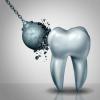
Breaking News
 Tucker Exposes Trump Would-Be Assassin Thomas Crooks' Social Media History, The FBI Coverup...
Tucker Exposes Trump Would-Be Assassin Thomas Crooks' Social Media History, The FBI Coverup...
 This Was A Major Red Flag In 2008, And Now It Is Happening Again!
This Was A Major Red Flag In 2008, And Now It Is Happening Again!
 Trump orders DOJ probe into Epstein's alleged ties with JPMorgan, Clinton and other Democrats
Trump orders DOJ probe into Epstein's alleged ties with JPMorgan, Clinton and other Democrats
Top Tech News
 Blue Origin New Glenn 2 Next Launch and How Many Launches in 2026 and 2027
Blue Origin New Glenn 2 Next Launch and How Many Launches in 2026 and 2027
 China's thorium reactor aims to fuse power and parity
China's thorium reactor aims to fuse power and parity
 Ancient way to create penicillin, a medicine from ancient era
Ancient way to create penicillin, a medicine from ancient era
 Goodbye, Cavities? Scientists Just Found a Way to Regrow Tooth Enamel
Goodbye, Cavities? Scientists Just Found a Way to Regrow Tooth Enamel
 Scientists Say They've Figured Out How to Transcribe Your Thoughts From an MRI Scan
Scientists Say They've Figured Out How to Transcribe Your Thoughts From an MRI Scan
 SanDisk stuffed 1 TB of storage into the smallest Type-C thumb drive ever
SanDisk stuffed 1 TB of storage into the smallest Type-C thumb drive ever
 Calling Dr. Grok. Can AI Do Better than Your Primary Physician?
Calling Dr. Grok. Can AI Do Better than Your Primary Physician?
 HUGE 32kWh LiFePO4 DIY Battery w/ 628Ah Cells! 90 Minute Build
HUGE 32kWh LiFePO4 DIY Battery w/ 628Ah Cells! 90 Minute Build
 What Has Bitcoin Become 17 Years After Satoshi Nakamoto Published The Whitepaper?
What Has Bitcoin Become 17 Years After Satoshi Nakamoto Published The Whitepaper?
High levels of toxicity are drastically reduced in the body after women switch to natural make-up

The study was conducted by researchers from the University of California, Berkeley, the California Department of Public Heath, and the Clinica de Salud del Valle de Salinas in Salinas, Calif., and a team of youth researchers from the CHAMACOS Youth Council.
The findings were particularly significant because the researchers selected the safer products using a publicly available database.
"Our study did not test [products] for the presence of these chemicals, but simply used techniques available to the average consumer: reading labels and investigating product safety through web-based databases," the researchers wrote.
The study was funded by the California Breast Cancer Research Program.
Toxic exposure "significantly" reduced
The study was conducted on 100 Latina girls between the ages of 14 and 18 who lived in Salinas and were participating in the Health and Environmental Research on Makeup of Salinas Adolescents (HERMOSA) study. The participants agreed that, for three days, they would only use cosmetics and personal care products provided by the research team.
All the products were selected from the Environmental Working Group's Skin Deep database, which is available online. They were all free of phthalates, parabens, triclosan and oxybenzone (also known as benzophenone-3, or BP-3). All these chemicals have been linked to endocrine-disrupting effects.
"Because women are the primary consumers of many personal care products, they may be disproportionately exposed to these chemicals," lead author Kim Harley said. "Teen girls may be at particular risk since it's a time of rapid reproductive development, and research has suggested that they use more personal care products per day than the average adult woman."
After just three days, levels of all four toxins in the girls' urine had fallen dramatically. Levels of metabolites of diethyl phthalate (a common fragrance and nail polish ingredient) fell by 27 percent. Levels of the sunscreen ingredient oxybenzone and the antibacterial chemical triclosan (found in soap, detergent, toothpaste, face wash and deodorant) both fell 36 percent. Levels of methyl and propyl paraben (used as preservatives in cosmetics, skin lotions and shampoos) fell 44 and 45 percent, respectively.
Learn more: http://www.naturalnews.com/053605_natural_makeup_chemical_toxins_body_chemistry.html#ixzz45RBWKteA

 A WORLD OF DEBT
A WORLD OF DEBT
 Unbanked In A Connected World
Unbanked In A Connected World

